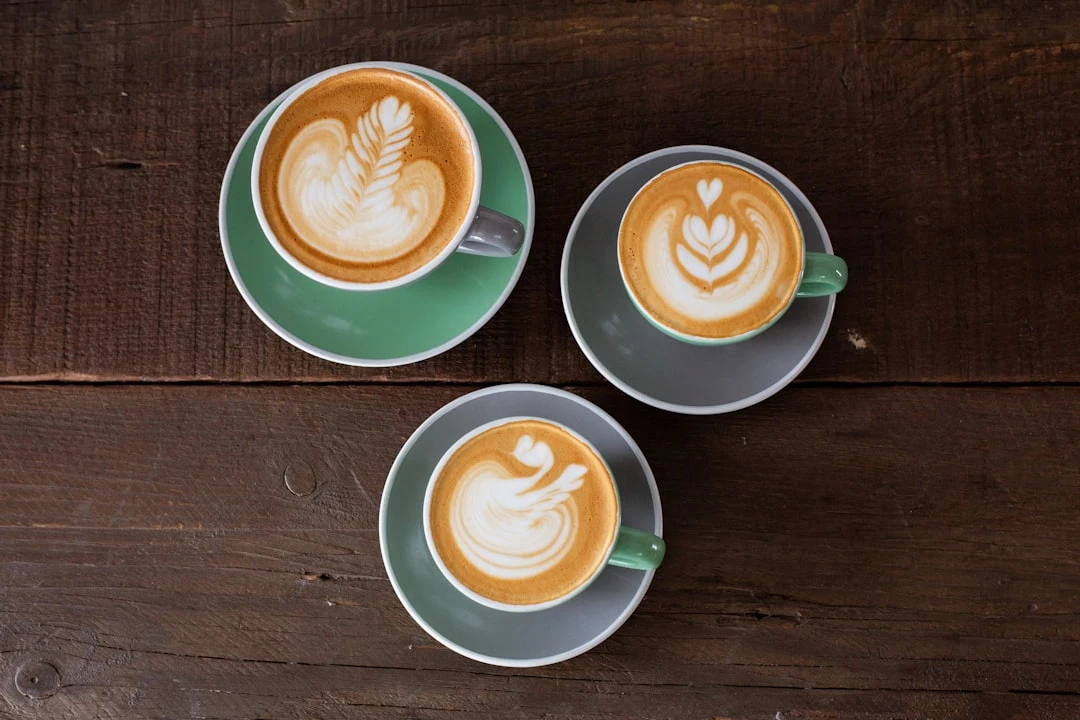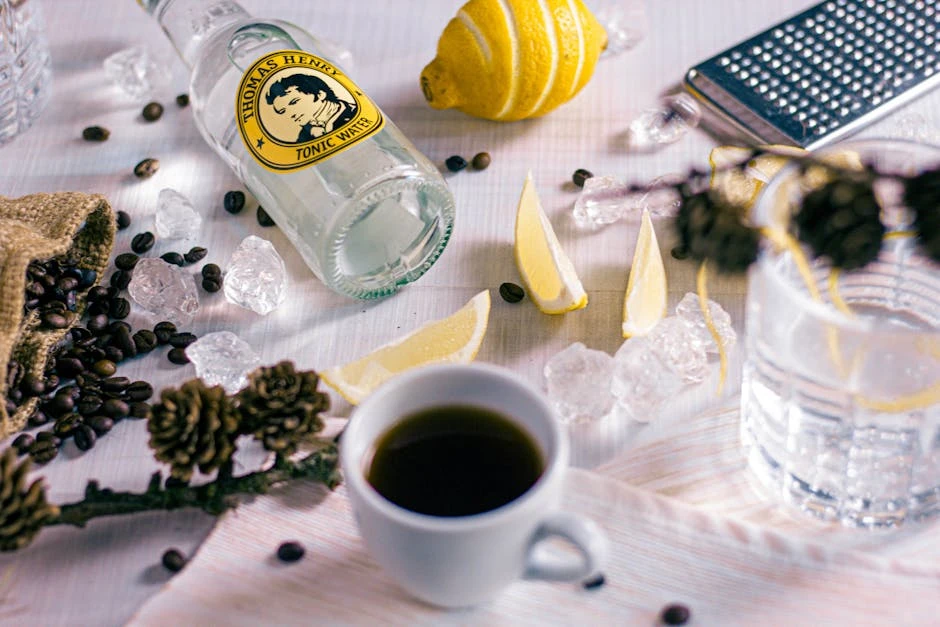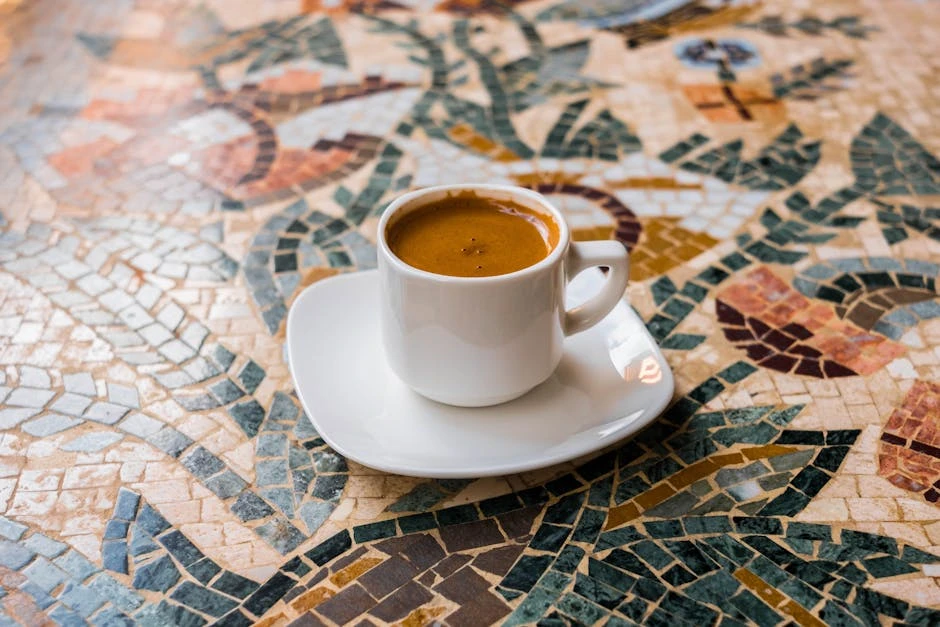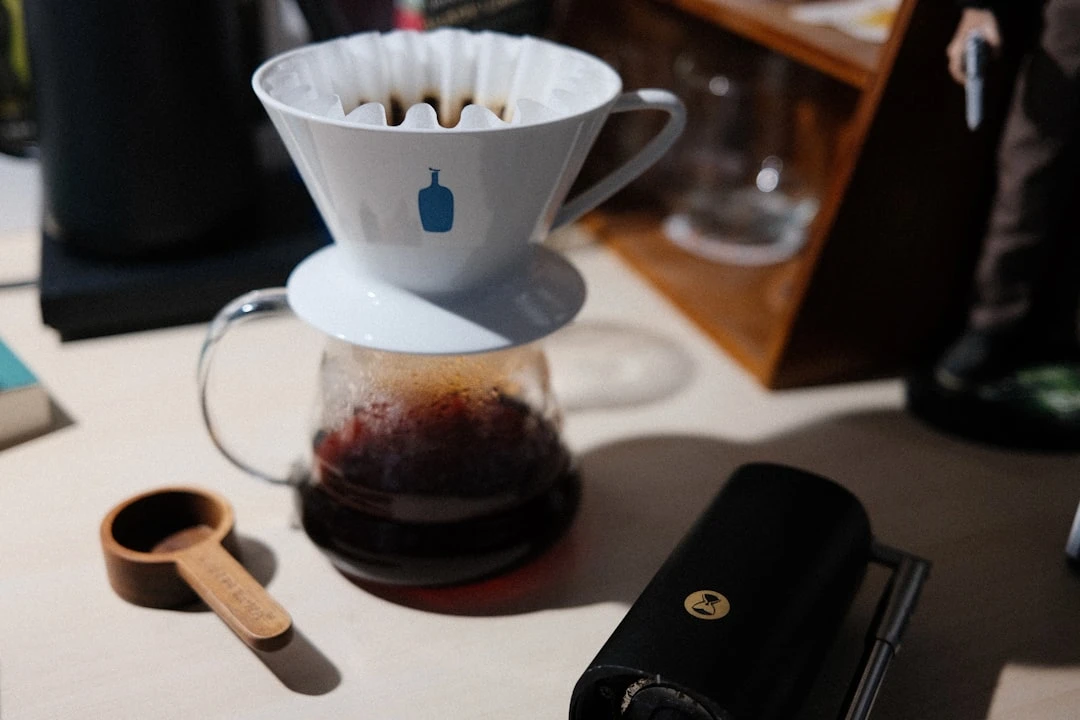Latte Art for Beginners: 5 Simple Patterns Anyone Can Master in 2025

Did you know that 73% of coffee drinkers say latte art makes their morning coffee taste better? I'll never forget the first time I attempted latte art – what was supposed to be a heart looked more like a blob of white paint floating in brown water! But here's the thing: latte art isn't just for Instagram-worthy photos. It's actually a sign of perfectly steamed milk and proper pouring technique, which means better-tasting coffee overall.
Whether you're using a fancy espresso machine or a simple milk frother, I'm going to walk you through five beginner-friendly latte art patterns that you can master in your own kitchen. No barista certification required – just a little patience and practice!
Understanding the Basics of Milk Steaming for Latte Art
Let me tell you, I wasted probably 50 cups worth of milk before I figured out what "microfoam" actually meant. I thought it was just regular foam, but smaller. Wrong! Microfoam is this velvety, paint-like texture that's the secret sauce behind every gorgeous latte art design.
The science is pretty cool actually. When you steam milk properly, you're creating tiny air bubbles that get incorporated evenly throughout the milk. This creates that glossy, almost wet-paint consistency that flows smoothly and holds its shape when you pour. Regular foam – the stuff that looks like soap bubbles – just sits on top and doesn't blend with your espresso.
Here's what I learned the hard way about milk temperature. Most beginners, myself included, think hotter is better. Nope! You want your milk between 140-150°F (60-65°C). Any hotter and the proteins break down, making your milk taste burnt and your foam unstable. I used to crank my steam wand to full blast and wonder why my designs looked like abstract art gone wrong.
The texture test is everything. Your steamed milk should look like wet paint when you swirl it in the pitcher. It should move as one fluid mass, not separate into foam and liquid. When you tap the pitcher on the counter, bubbles should pop and the surface should become mirror-like. If it looks chunky or has big bubbles, start over. Trust me, trying to make latte art with bad milk is like trying to paint with cottage cheese.
For milk choice, stick with whole milk when you're learning. The fat content helps stabilize the foam and makes everything more forgiving. I've tried oat milk, almond milk, and every plant-based alternative under the sun. Some work okay, but they're much trickier and less consistent. Master the basics with whole milk first, then experiment later.
Your equipment matters, but not as much as you think. I started with a $30 handheld frother from Target and made decent heart patterns. Sure, a proper espresso machine with a steam wand is ideal, but don't let equipment be your excuse. The principles are the same regardless of what you're using.
The Heart Pattern: Your First Latte Art Success
The heart was my first real victory in latte art, and it'll probably be yours too. It's forgiving, looks impressive, and teaches you the fundamental pouring technique that every other pattern builds on. Plus, there's something satisfying about creating a perfect heart in your morning coffee – makes you feel like a real barista even if you're still in your pajamas.
Start with your cup tilted at about a 45-degree angle. This is crucial! I used to pour into a flat cup and wonder why my milk just disappeared into the coffee. The angle creates a "canvas" on the surface where your design can actually form. Hold your milk pitcher about 3-4 inches above the cup initially.
Here's the technique: Pour a thin, steady stream into the center of your cup. You're not making the heart yet – you're just building the base of steamed milk and espresso. Keep that stream thin and controlled. The milk should disappear into the coffee, creating that beautiful tan color we're after.
When your cup is about half full, here's where the magic happens. Lower your pitcher close to the surface – like within an inch – and increase your flow rate. Pour steadily into the center, and you should see white milk start to appear on the surface. This is your heart forming!
The finish is what separates beginners from pros. When you've got a nice white circle on the surface, quickly cut through it with a swift forward motion of your pitcher. This creates the pointed bottom of the heart. The key word here is "swift" – hesitate and you'll get a blob instead of a clean point.
My biggest mistake early on was pouring too fast at the beginning. I'd blast milk into the cup and create a mess. Think of it like drawing – you need control and patience. The second biggest mistake was not getting close enough to the surface when creating the white part. If you're too high, the milk just disappears into the coffee instead of floating on top.
Practice this pattern until you can do it without thinking. I'm talking at least 20-30 attempts. Use the same cup, the same amount of coffee, and the same milk temperature every time. Consistency in practice leads to consistency in results. Save the milk after each attempt and reheat it – no need to waste a gallon of milk learning one pattern.
Mastering the Leaf (Rosetta) Pattern
The leaf pattern fooled me for months. It looks super complex with all those segments, but it's actually just repeating the same motion over and over. Once I figured that out, it became my go-to design for impressing friends. The key is understanding that you're not drawing each leaf segment individually – you're creating them through consistent wrist movement.
Start exactly like the heart – thin stream, high pour, building your base. The difference comes when you drop down close to the surface. Instead of pouring in one spot, you're going to move your pitcher side to side while maintaining that steady flow.
Here's the technique that finally clicked for me: imagine you're painting with the milk stream. Start from one side of the cup and wiggle your wrist back and forth as you slowly move across the surface. Each wiggle creates one segment of the leaf. The rhythm is important – wiggle, wiggle, wiggle as you move from left to right (or right to left, whatever feels natural).
The segments form because you're essentially creating little white circles that connect together. When you move the pitcher side to side while pouring, you're depositing milk in different spots, but the continuous flow connects them. It's like connecting the dots, but with milk.
The finish is crucial for a clean leaf. When you reach the other side of the cup, cut through all those segments with one quick motion toward the center. This creates the "stem" of the leaf and gives it that professional look. Without this cut-through, you just have a zigzag pattern instead of an actual leaf.
I struggled with this pattern because I was trying to be too precise with each wiggle. The leaf works best when you find a natural rhythm and stick with it. Think of it like painting – smooth, flowing motions work better than jerky, calculated ones. Your wrist should feel relaxed, not tense.
The common mistake I see beginners make is moving too fast across the cup. Take your time! Each segment needs a moment to form before you move to the next spot. Rush it, and you'll get a blurry mess instead of distinct leaf segments.
Practice the side-to-side motion without coffee first. Just hold your pitcher and practice the wrist movement until it feels natural. The muscle memory is everything with this pattern. Once your hand knows the motion, the rest comes together pretty easily.
The Apple Pattern: Building on Your Skills
The apple pattern was my "aha" moment when I realized latte art is really about controlling milk flow and understanding how milk behaves on the coffee surface. It's essentially a modified heart with an extra step, but that extra step teaches you so much about precision and timing.
You start with the same foundation as always – high pour, thin stream, building your base. But here's where it gets interesting. When you drop down to create the white part, you're going to pour a larger circle than you would for a heart. Think of it as creating the round body of an apple.
The trick is in the flow control. You want a nice, steady stream that creates a good-sized white circle on the surface. Don't rush this part – let the circle develop fully. I used to be impatient and move to the next step too quickly, which resulted in an undersized apple that looked more like a weird oval.
Here's the signature move: once you have your circle, you're going to create the apple's indent. This is done by briefly increasing your pour rate and moving the pitcher slightly toward the back of the circle. This creates a small white "bite" or indent that makes it clearly recognizable as an apple instead of just a circle.
The finishing cut is similar to the heart, but you want to start from the indent and cut through to create the stem. This gives the apple its characteristic shape – round body with a small stem on top. The key is making that cut deliberate and confident. Hesitate, and you'll muddy the clean lines you've worked to create.
What I love about the apple pattern is that it teaches you flow variation within a single design. You're using three different flow rates – thin for the base, medium for the circle, and a brief heavy flow for the indent. This control carries over to every other pattern you'll learn.
The most common mistake is making the indent too big or too small. Too big and it looks like someone took a huge bite out of your apple. Too small and it's barely noticeable. It should be about 1/4 of the circle's size – noticeable but proportional.
Practice this pattern when you want to challenge yourself but don't want to jump into something completely new. It bridges the gap between basic patterns and more advanced designs. Plus, apples are universally recognizable, so even if it's not perfect, people will know what you were going for.
Advanced Beginner Patterns: Tulip and Swan Basics
Here's where things get exciting – and where I made the mistake of jumping ahead too quickly. I was so eager to impress people with complex designs that I skipped mastering the basics. Don't do what I did! These patterns require solid fundamentals, and attempting them too early will just frustrate you.
The tulip is actually multiple hearts stacked on top of each other. Sounds simple, right? It's not. Each "layer" of the tulip requires precise timing and milk control. You pour a small heart, then immediately pour another slightly above it, then another, building upward. The challenge is keeping each layer distinct while maintaining the overall tulip shape.
Start with just two layers – essentially a double heart. Pour your first heart as normal, but make it smaller than usual. Then, without stopping your pour, move the pitcher slightly higher in the cup and create a second heart above the first. The cut-through at the end goes through both hearts, creating that tulip stem.
The timing is everything. If you pause between layers, they won't connect properly. If you rush, they'll blur together. It's like patting your head and rubbing your stomach – it requires coordination that only comes with practice.
For the swan, you're essentially creating an elongated heart with a curved "neck." The body is poured like a heart, but instead of cutting straight through for the point, you curve your cut in an S-shape to create the swan's neck and head. It sounds easier than it is!
I'll be honest – it took me months to get a recognizable swan. The neck either looked too thick, too thin, or just plain weird. The secret is confidence in that final curved cut. Any hesitation shows up immediately in the design.
Here's my advice: don't attempt these patterns until you can consistently create 20 perfect hearts in a row. I'm serious about that number. These advanced patterns require muscle memory and confidence that only comes from repetition. Trying to skip steps just leads to frustration and wasted milk.
When you do start practicing these, use the same systematic approach. Same cup, same coffee amount, same milk temperature. Master one layer of tulip before attempting multiple layers. Get comfortable with the basic swan body before worrying about perfecting the neck curve.
Remember, even professional baristas struggled with these patterns initially. The difference between beginners and pros isn't talent – it's patience and consistent practice.
Common Latte Art Mistakes and How to Fix Them
Oh boy, where do I even start with mistakes? I've made every single one in the book, and probably invented a few new ones along the way. The good news is that every mistake teaches you something, and once you understand what went wrong, fixing it becomes much easier.
The disappearing design is probably the most frustrating mistake for beginners. You pour what looks like a perfect heart, and then it just... vanishes into the coffee. This happens when your milk isn't the right temperature or texture, or when you're pouring from too high. The milk is mixing with the coffee instead of floating on top.
Fix: Make sure your milk has that paint-like consistency before you start. If it's too thin or too hot, it'll just disappear. Also, get closer to the surface when you're creating the white parts of your design. I mean really close – like almost touching the coffee.
Blurry or muddy designs usually mean you're pouring too fast or your milk has big bubbles instead of microfoam. I used to crank my steam wand to maximum and wonder why everything looked like abstract art. Aggressive steaming creates unstable foam that doesn't pour cleanly.
Fix: Slower steam, better texture. Take time to create proper microfoam, and pour with more control. Think of it like writing with a pen – you need steady pressure and smooth movement.
The "blob effect" happens when you dump too much milk in one spot. Instead of a clean heart or leaf, you get this shapeless white mass floating in your coffee. This was my signature move for the first month of learning latte art.
Fix: Control your flow rate and move the pitcher smoothly. Don't pause in one spot for too long, and don't pour too aggressively when creating designs.
Equipment issues can sabotage even perfect technique. A bent steam wand, wrong cup size, or inconsistent espresso shots all affect your latte art. I used to blame my skills when really it was my equipment holding me back.
Fix: Use the same equipment consistently while learning. Wide, flat-bottomed cups work better than narrow or tapered ones. Make sure your espresso shots are consistent – watery or over-extracted shots don't provide a good canvas for latte art.
Here's the practice routine that finally worked for me: 15 minutes every morning, same setup every time. I'd make five attempts at the same pattern, then move on with my day. No marathon sessions, no trying to perfect everything at once. Consistency beats intensity every time.
Track your progress with photos. I know it sounds silly, but having a visual record of your improvement is incredibly motivating. Plus, you'll start to notice patterns in your mistakes that you might miss otherwise.
Conclusion
Latte art might seem intimidating at first, but remember – every professional barista started exactly where you are now. The key is consistent practice and understanding that each "failed" attempt teaches you something valuable about milk texture, pouring technique, and timing.
Start with the heart pattern and don't move on until you can create five decent hearts in a row. Trust me, this foundation will make everything else so much easier! Once you've mastered these beginner patterns, you'll have the confidence and skills to tackle more complex designs.
The most important thing I learned through all my mistakes and successes is that latte art is really about patience with yourself. Some days your milk will be perfect, other days it won't cooperate no matter what you do. That's normal! Even after years of practice, I still have off days where nothing turns out right.
But here's what makes it all worthwhile – that moment when you nail a perfect design and take that first sip of coffee that tastes as good as it looks. There's something magical about creating something beautiful with your own hands, especially first thing in the morning.


